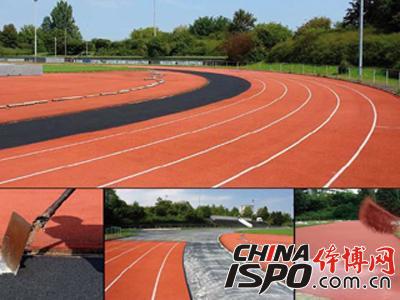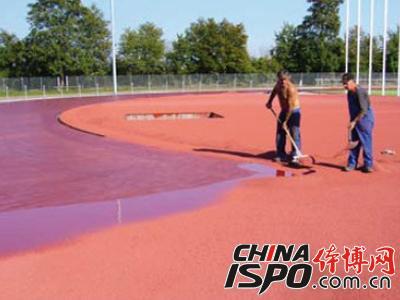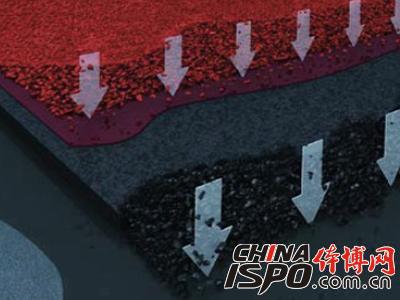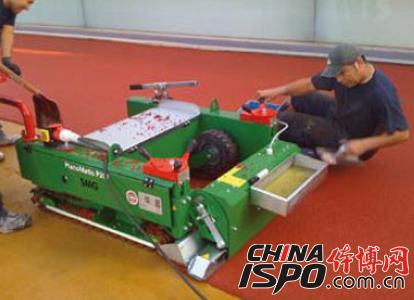Many of the playgrounds on campus today feature plastic runways that look sleek and professional. However, experts have raised concerns about the potential health risks associated with these surfaces. They suggest that the materials used in plastic runways can emit harmful gases, especially under high temperatures or strong sunlight, which may negatively impact students’ health. With track and field events becoming more popular, it's essential to understand what exactly makes up a 400-meter plastic track.

*Runway laying screen*
In China, most plastic tracks are made from industrial polyurethane, also known as TDI (Toluene Diisocyanate). This material is mixed with an adhesive and a curing agent before being laid down. The components—TDI, the curing agent, and the binder—are all organic compounds that can release irritating gases when exposed to heat or light. Many students and teachers have noticed this issue, often reporting a strong plastic smell when using the facilities.
Despite the investment schools make in these runways, there are often restrictions on their use. Some campuses limit access by enclosing the areas with fences or restricting operating hours. This is not only to protect the facilities but also due to the high cost of maintaining synthetic tracks. Excessive use can lead to wear and tear, making regular maintenance essential.
Modern stadiums have largely moved away from traditional coal cinder tracks toward artificial synthetic surfaces. While these new tracks look similar, they differ significantly in function and performance. This article aims to clarify the differences and provide a better understanding of what makes a plastic runway unique.
**The Origin of "Plastic Runway"**
When designing large outdoor stadiums, the layout must be carefully planned. A typical structure includes a football field surrounded by a 400-meter running track. The track is covered with synthetic materials, including areas for javelin, discus, long jump, and triple jump. Although some venues still use coal cinder tracks, synthetic materials are now the standard.
The term "plastic runway" is commonly used in everyday language, while in the West, they are often called "tartan tracks." Originally developed in the 1960s, tartan tracks provided better protection for athletes and created a fairer competition environment. Today, many tracks still retain their classic red color and grainy texture, though modern versions come in various colors and designs.
**Foundation Layer – Invisible but Important**

*Workers Spread EPDM Particles*
According to German standards, a synthetic track should have an asphalt base, an elastic layer, and a final surface layer. The elastic layer typically uses composition rubber particles and polyurethane, while the top layer consists of EPDM particles and polyurethane. These materials are bonded together to create a textured surface. The quality of the track depends on the combination of materials, affecting its durability, UV resistance, and temperature tolerance.
**Installation Methods**

*On-site construction installation runway*
There are several ways to install a track. One method involves constructing it on-site using layers of materials. Another is a hybrid approach where parts of the track are pre-made and then assembled. Some tracks are even produced in coils and transported directly to the site. Each method has its advantages, depending on the project’s size and requirements.
**Prefabricated Runway**

*Use the machine to install the runway*
A fully prefabricated runway is installed like a sheet floor. It is made from vulcanized rubber with a grid structure on top of the foundation. These tracks are used in high-level competitions like the Olympics because of their superior performance. They offer better speed, energy return, and comfort for athletes. Unlike on-site constructed tracks, prefabricated ones are manufactured in controlled environments, ensuring consistent quality. They can also be easily removed or repositioned, making them ideal for temporary installations.
Car Aromatherapy,Car Mounted Aromatherapy Ornaments,Customized Car Aromatherapy,Car Headrest Aromatherapy
DONGGUAN TETSUMET TECHNOLOGY CO.,LTD , https://www.tetsumet.com